Many American hunters dream of owning a double rifle suitable for hunting dangerous game in Africa. This is usually due to reading classic African hunting literature from the first half of the twentieth century, when smokeless powder made powerful doubles far more practical and effective than the really big-bore, black-powder rifles they replaced.

Smokeless side-by-sides (and they normally were side-by-sides, not over/unders) could be built much lighter than doubles chambered for cartridges measured in gauge, not caliber. Smokeless ammunition was trimmer as well – potentially important when after lions, Cape buffalo and elephants. The ability to personally carry plenty of ammunition made running out less likely during a dangerous dust-up.
Double-rifle dreams often include fantasies of standing next to a professional hunter (PH), blazing away at an oncoming lion, buffalo or elephant. Doubles were considered the best “stopping rifles” by most PHs because they offered two very quick shots, often all a hunter had time to shoot in thick cover; if the first shot failed to stop the animal, an immediate second shot could be very handy.
Doubles also easily accommodated bigger cartridges than even the largest bolt actions. Many early big-bore smokeless cartridges were very long to keep pressures low enough for tropical use with early heat-sensitive powders. Unlike bolt actions, double rifles lacked magazines that can limit cartridge length: Instead, rounds are manually fed directly into the chambers, one reason over/unders were rare: They had to be opened wider than side-bysides to reload – not as handy in an elephant emergency.
All those reasons make sense for a professional hunter, whose most important job is the safety of his clients. It does not necessarily make sense for the average safari hunter, because a well-placed initial shot is the best way to “stop” a charge – by preventing it from ever happening.
Diese Geschichte stammt aus der September - October 2019-Ausgabe von Rifle.
Starten Sie Ihre 7-tägige kostenlose Testversion von Magzter GOLD, um auf Tausende kuratierte Premium-Storys sowie über 8.000 Zeitschriften und Zeitungen zuzugreifen.
Bereits Abonnent ? Anmelden
Diese Geschichte stammt aus der September - October 2019-Ausgabe von Rifle.
Starten Sie Ihre 7-tägige kostenlose Testversion von Magzter GOLD, um auf Tausende kuratierte Premium-Storys sowie über 8.000 Zeitschriften und Zeitungen zuzugreifen.
Bereits Abonnent? Anmelden
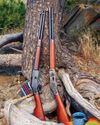
CIMARRON .32-20 Short Rifle & Carbine
In the heyday of Winchester Repeating Arms Company lever guns, it offered muskets, standard rifles, short rifles and saddle ring carbines.
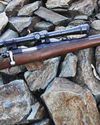
Remington's Model 722 and .222 Cartridge
It's easy enough to define what a varmint is, those pesky critters that tear up pastures, flower beds and all kinds of expensive crops people need for various reasons - most importantly, to make a living and/or something with which to feed themselves.

Coyote Bullets
What is Best for You?
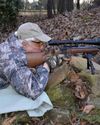
Remington's 5mm Rimfire Magnum
Shooting a Classic
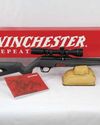
Winchester's New Wildcat
The Ultralight Rimfire Varmint Rifle

.223 Remington from .30-30 Winchester?
Multitasking for Varmints

LOADS FOR A .22 TCM
The .22 TCM first appeared commercially in 2012, chambered in a Rock Island Armory 1911-style handgun.
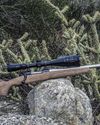
Everybody Loves Velocity
The 4,500-fps WSSM Project

A BOLT-ACTION FRANCHI 224 VALKYRIE
Testing New Loads
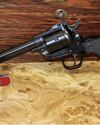
.22 Winchester Magnum Rimfire
Shooting Revolvers